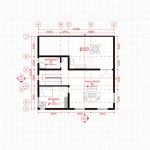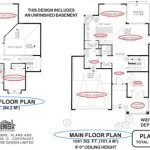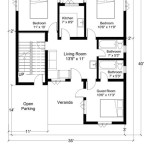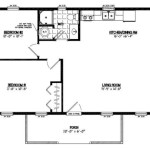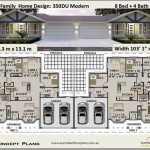What Is Dimension In Floor Plan?
In the world of home design and construction, a floor plan is a critical document that provides a detailed layout of a building's interior. One of the essential aspects of a floor plan is the inclusion of dimensions, which are measurements that indicate the size and shape of each room and space within the building.
Dimensions in a floor plan typically consist of two measurements: length and width. The length is the horizontal measurement, and the width is the vertical measurement. Both measurements are expressed in linear units, such as feet, inches, or meters.
The primary purpose of dimensions in a floor plan is to provide accurate representations of the space available in each room. This information is crucial for various reasons, including:
- Furniture placement: Dimensions allow homeowners and designers to determine the appropriate size and arrangement of furniture within each room.
- Material estimation: Accurate dimensions are essential for calculating the amount of materials needed for flooring, painting, or other renovations.
- Construction planning: Dimensions guide contractors during the construction process, ensuring that walls, doors, and other structural elements are built to the correct specifications.
- Property evaluation: Dimensions provide valuable information for real estate agents and potential buyers, allowing them to assess the overall size and functionality of a property.
- Code compliance: In some cases, building codes may require specific dimensions for certain rooms or spaces, such as bedrooms or bathrooms.
Dimensions in a floor plan are typically represented as a series of numbers written adjacent to the walls or other boundaries of each room. These numbers may be accompanied by symbols or abbreviations to indicate the units of measurement, such as "ft" for feet or "m" for meters.
When reading dimensions in a floor plan, it's important to pay attention to the placement of the numbers. The first number typically represents the length of the wall or boundary, and the second number represents the width. For example, a dimension written as "10' x 12'" indicates a wall that is 10 feet long and 12 feet wide.
Dimensions are an essential aspect of floor plans, providing accurate measurements that facilitate efficient space planning, material estimation, construction planning, property evaluation, and code compliance. Understanding how to read and interpret dimensions is crucial for anyone involved in the design, construction, or renovation of a building.

12 Examples Of Floor Plans With Dimensions

How To Read A Floor Plan With Dimensions Houseplans Blog Com

How To Read A Floor Plan With Dimensions Houseplans Blog Com

Floor Plans With Dimensions Including Examples Cedreo

How To Properly Read Floor Plans And What Details Look For

Adding Dimensions To Your Floor Plan

12 Examples Of Floor Plans With Dimensions

Floor Plans With Dimensions Including Examples Cedreo

A Floorplan Of Single Family House All Dimensions In Meters Scientific Diagram

12 Examples Of Floor Plans With Dimensions
Related Posts

